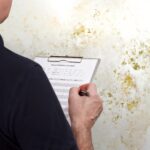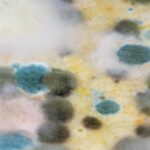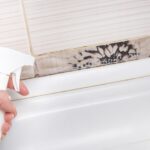The Impact of Florida’s Spring Humidity on Mold Growth

Spring in Florida is a beautiful time of year, with warm temperatures and blooming flowers. However, the increased humidity during these months also creates the perfect environment for mold growth. But why is mold growth in spring such a big issue, especially in regions like Florida?
Mold can not only cause damage to your home. It also can negatively impact your indoor air quality, potentially leading to health issues for you and your family.
In this blog post, we will discuss the impact of Florida’s spring humidity on mold growth. Additionally, we’ll offer helpful prevention tips and solutions to keep your home mold-free.
Why Mold Growth in Spring is a Concern
The Sunshine State of Florida boasts some of the most stunning beaches in the world, offering a balance of excitement and relaxation, making it an ideal place to start a family. With over 200 days of sunshine each year, from Tallahassee to Key West, it’s the perfect place to bask in the sun. But despite its idyllic qualities, this paradise has a dark side: humidity.

Being surrounded by the Atlantic and Gulf of Mexico means that the air in Florida is filled with water vapor, and the tropical heat only amplifies this issue.
Our daily activities, such as working and running errands, result in sweat buildup. The thick, wet air impedes the drying process, leading to that hot and sticky feeling we all know too well. But humidity is not just an outdoor problem; it can also affect indoor spaces.
Mold growth only requires moisture, and humidity is a source of moisture. A tiny leak under the kitchen sink, roof, or air conditioning condensation can grow mold.
With Florida’s high relative humidity levels (often over 60%) for extended periods, mold can germinate and grow into a bloom. This mold can appear in various colors, often mistaken for dirt or cobwebs. It can be in either an active or inactive state. Active mold is wet and slimy, while inactive mold is dry and dusty.
It only takes 24 to 48 hours for mold to grow once it has found a suitable environment. If left unchecked, mold can spread quickly and cause significant damage to a home’s structure and air quality.
So if you find mold or notice signs in your home, it’s best to immediately call a professional mold inspection company as soon as possible.
The Effects of Increased Humidity on Mold Growth in Spring
Florida’s spring humidity creates an ideal environment for mold growth in the following ways:
- Excess Moisture: As humidity levels rise, excess moisture can accumulate in your home, particularly in areas with poor ventilation or where water tends to collect. This provides an ideal breeding ground for mold.
- Condensation: Increased humidity can also cause condensation on windows, walls, and other surfaces, providing a constant source of moisture for mold growth.
- Warmer Temperatures: Higher temperatures during spring can accelerate mold growth, allowing it to spread more quickly and become a more significant issue in your home. May is one of Florida’s warmest months of the year. Beaches like Boca Raton and Palm Beach present one of the warmest waters in the state, reaching an average of 80 degrees Fahrenheit.
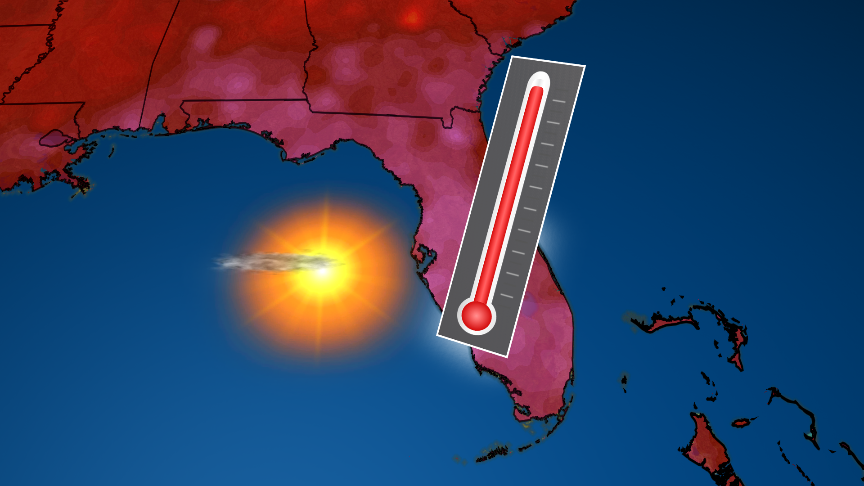
The Impact of Mold Growth on Indoor Air Quality
Mold growth in spring can significantly impact your home’s indoor air quality, leading to various potential health problems. But how?
Mold releases microscopic spores into the air, which can be inhaled by residents and cause respiratory problems and allergic reactions, irritate the eyes, nose, and throat, and exacerbate asthma symptoms.

Prolonged mold exposure can also lead to more serious respiratory issues, particularly in individuals with compromised immune systems, young children, and older adults.
It’s essential to address mold growth promptly to protect the health and well-being of those living in the home.
Prevention Tips for Reducing Mold Growth in Spring

Taking proactive steps to reduce mold growth in spring can help protect your home and your family’s health. Here are some tips to help you keep mold at bay:
- Control Humidity:
Use a dehumidifier or air conditioner to maintain indoor humidity below 60% (between 45% and 55% is ideal for Florida). This can help prevent excess moisture and mold growth.
- Ensure Proper Ventilation:
Ensure your home is well-ventilated, particularly in areas prone to mold growth, such as bathrooms, kitchens, and basements. Use exhaust fans or open windows to improve air circulation.
- Fix Water Leaks:
Check for and repair any water leaks in your home, including roofs, pipes, and faucets. Regularly inspect your home for signs of water damage or mold.
- Clean and Dry Wet Areas:
Clean and dry any wet areas within 24–48 hours to prevent mold growth. This includes spills, leaks, and condensation.
- Use Mold-Resistant Products:
When renovating or building, use mold-resistant materials such as mold-resistant drywall and paint to help prevent mold growth.
Mold Growth in Spring: Early Detection Is Key
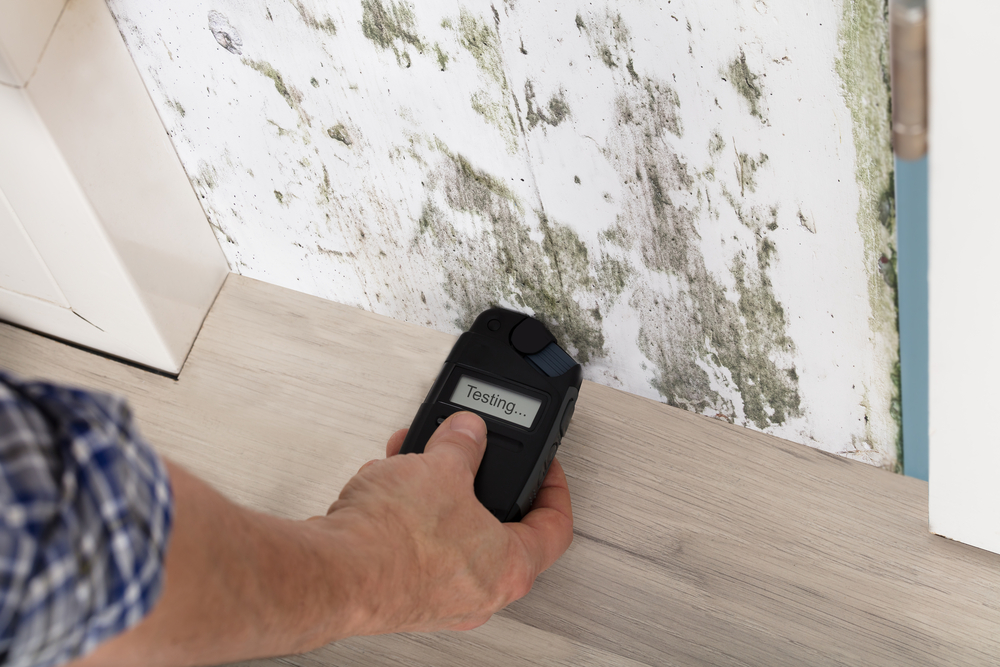
Early detection is the key to preventing mold growth and avoiding the health and property damage it can cause. However, mold is not always easy to spot, but some signs can indicate its presence. A musty odor is a common sign of mold and visible growth on walls, ceilings, and floors.
A professional mold inspector can assess the home and identify areas where mold is growing or has the potential to grow.
If you suspect that you have mold in your home or office, it’s essential to have it inspected and removed promptly by a professional. ETA Mold offers comprehensive mold inspections that identify the source of mold and provide recommendations for remediation.
Solutions for Dealing with Mold Growth in Spring
If you suspect or discover mold growth in your home, taking action as soon as possible is essential. Here are some solutions for dealing with mold growth in spring:
- DIY Mold Removal: If the mold growth is small and limited to a non-porous surface, clean it with water and mild detergent. Make sure to wear protective gear, such as gloves, goggles, and a mask, to protect yourself from mold exposure during the cleaning process.
- Professional Mold Inspection: If you are unsure of the extent of mold growth in your home or suspect hidden mold, it is best to call a professional mold inspection company like ETA Mold. They can perform a thorough inspection, identify the source of the mold, and recommend an appropriate course of action.
- Professional Mold Remediation: For extensive mold growth or mold that has penetrated porous surfaces, it is essential to enlist the help of a professional mold remediation company. They have the necessary equipment and expertise to remove mold and safely restore your indoor air quality.
- Preventative Maintenance: After addressing any mold issues, it is crucial to implement preventive measures to avoid future mold growth in spring. This includes maintaining proper humidity levels, ensuring adequate ventilation, and routinely inspecting your home for potential water leaks and mold.
Protect Your Home and Health from Mold Growth in Spring
In conclusion, mold growth in spring is a serious issue that should not be taken lightly. By understanding the impact of Florida’s increased humidity on mold growth, taking steps to prevent its growth, and having it inspected and removed promptly by a professional, you can protect your health and property.
ETA Mold is here to help, so contact us today to schedule a mold inspection and start breathing easier!
FAQs About The Impact of Spring Humidity on Mold Growth
Why does Florida’s spring humidity promote mold growth?
Florida’s high spring humidity creates a moist environment, which is ideal for mold spores to grow and spread quickly indoors and outdoors.
What health risks are associated with indoor mold exposure?
Mold exposure can cause respiratory problems, allergic reactions, eye and throat irritation, and worsen asthma symptoms, especially in sensitive individuals.
How does mold affect indoor air quality?
Mold releases tiny spores into the air that can be inhaled, contaminating indoor air and potentially causing health issues.
Which areas of a home are most vulnerable to mold growth in spring?
Areas with poor ventilation and moisture buildup, such as bathrooms, kitchens, basements, and places near leaks, are most susceptible.
What are early signs of mold growth to watch for?
Common signs include a musty odor, visible mold spots (often black, green, or white), and damp or discolored walls and ceilings.
What home measures can help prevent mold growth during Florida’s spring?
Use dehumidifiers or air conditioning to control humidity, fix leaks promptly, ensure proper ventilation, and clean wet areas within 24-48 hours.
When should I contact a professional mold inspector?
If you see extensive mold, notice persistent musty odors, or suspect hidden mold behind walls or under floors, it’s best to call a professional.
What professional solutions are available for mold removal?
Professionals use specialized equipment and techniques for thorough mold remediation, including containment, removal, and air purification.
How can I maintain indoor humidity levels to prevent mold?
Keep indoor humidity below 60%, ideally between 45-55%, by using dehumidifiers, air conditioning, and improving ventilation.
Are mold-resistant building materials effective in preventing mold?
Yes, using mold-resistant drywall, paint, and other materials can significantly reduce the chance of mold growth during humid seasons.






